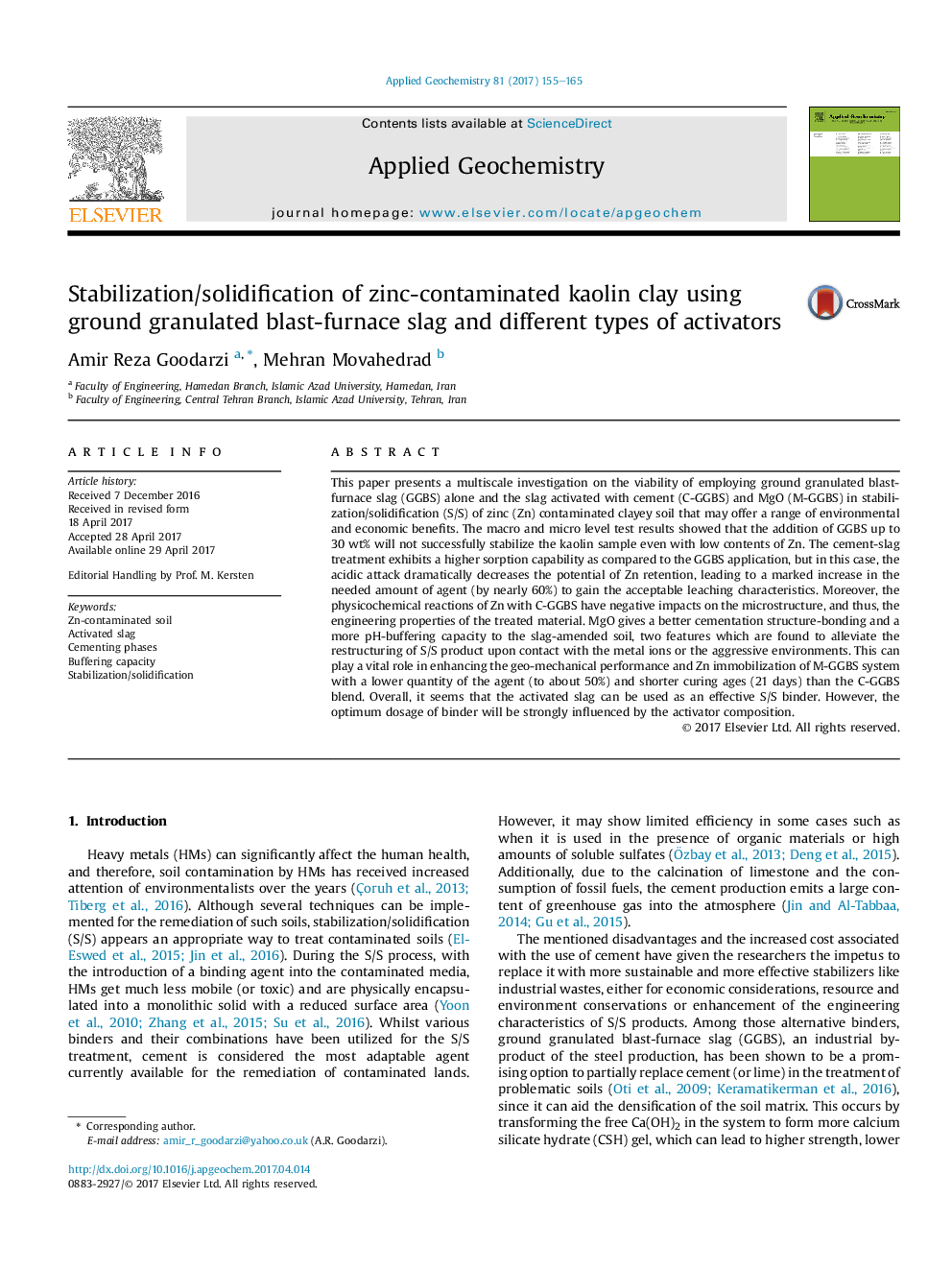| Article ID | Journal | Published Year | Pages | File Type |
|---|---|---|---|---|
| 5752465 | Applied Geochemistry | 2017 | 11 Pages |
Abstract
This paper presents a multiscale investigation on the viability of employing ground granulated blast-furnace slag (GGBS) alone and the slag activated with cement (C-GGBS) and MgO (M-GGBS) in stabilization/solidification (S/S) of zinc (Zn) contaminated clayey soil that may offer a range of environmental and economic benefits. The macro and micro level test results showed that the addition of GGBS up to 30Â wt% will not successfully stabilize the kaolin sample even with low contents of Zn. The cement-slag treatment exhibits a higher sorption capability as compared to the GGBS application, but in this case, the acidic attack dramatically decreases the potential of Zn retention, leading to a marked increase in the needed amount of agent (by nearly 60%) to gain the acceptable leaching characteristics. Moreover, the physicochemical reactions of Zn with C-GGBS have negative impacts on the microstructure, and thus, the engineering properties of the treated material. MgO gives a better cementation structure-bonding and a more pH-buffering capacity to the slag-amended soil, two features which are found to alleviate the restructuring of S/S product upon contact with the metal ions or the aggressive environments. This can play a vital role in enhancing the geo-mechanical performance and Zn immobilization of M-GGBS system with a lower quantity of the agent (to about 50%) and shorter curing ages (21 days) than the C-GGBS blend. Overall, it seems that the activated slag can be used as an effective S/S binder. However, the optimum dosage of binder will be strongly influenced by the activator composition.
Related Topics
Physical Sciences and Engineering
Earth and Planetary Sciences
Geochemistry and Petrology
Authors
Amir Reza Goodarzi, Mehran Movahedrad,
